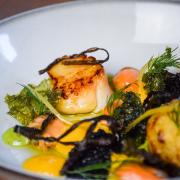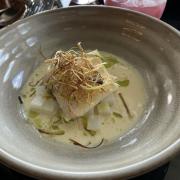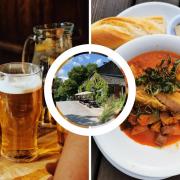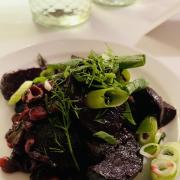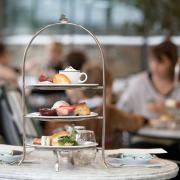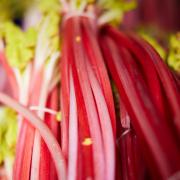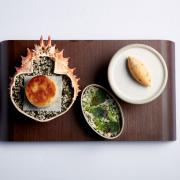Julia Medforth has produced a range of tonic waters down on her Wolds farm, writes Tony Greenway. As a result, you can now mix yourself a completely Yorkshire-made G&T

What’s gin without tonic? Well, very strong, for starters. These two drinks are literally made for each other. The thing is, many people don’t want to splash supermarket brand tonic water into their gin (or vodka) these days. Gin drinkers have become a lot more discerning and are constantly on the look out for trendy brands. Just ask achingly-hip tonic water-maker Fever-Tree which has enjoyed astonishing success and must owe at least part of its popularity surge to gin’s incredible renaissance.
Make no mistake gin’s renaissance has been incredible. It was once disparagingly nicknamed ‘mother’s ruin’, confined to the back of the drinks cabinet and only given to granny at Christmas. Now it’s the drink ‘du jour’. Gin bars have sprung up on many high streets and gin distillers are everywhere. Yorkshire has loads of them. It’s a tipple that’s big, fashionable news again and it was even recently named ‘Britain’s favourite spirit’.
‘Gin has been an up-and-coming drink for a while,’ says Julia Medforth, founder and owner of Wharram-based Raisthorpe Manor Fine Foods, which she established in 2008. ‘In fact, people are becoming gin connoisseurs and looking for a good tonic as a mixer. A G&T is three quarters tonic to a quarter of gin so it’s essential to add a tonic that will enhance the botanicals in the gin. Customers are also after natural products and keen to know which ingredients are going into their drinks.’ In other words, real gin fans are just as knowledgeable about the best brands of tonic water as they are about the best brands of gin.
There is a bitter colonial tang to the history of tonic water, of course, which has been around for a couple of hundred years. In the days of the Empire, the British were keen on the drink because it contained quinine — an extract from the bark of the cinchona tree, nicknamed ‘the fever tree’ — which had a reputation as an anti-malarial. To make quinine more palatable to soldiers, British officers in the Raj started mixing it with water, lime and... gin.

Medforth knows what she’s talking about when it comes to gin, because her liqueurs are currently stocked in the cocktail bars of Harvey Nichols nationwide and her oak-aged Yorkshire dry gin is award-winning. That’s good going in just 10 years, particularly as she started her business from her farmhouse kitchen table, first making a raspberry gin from her grandmother’s recipe for the guests of a local shoot. ‘A lot of people said to us why don’t you bottle it? If you do, we’d buy it,’ she remembers. ‘So we expanded into the dining room and things took off from there.’
Raisthorpe now operates from a new facility on the farm and its products include a range of liqueurs — sloe gin, damson gin, raspberry gin, sloe whisky, fruit vodkas — gin jams and jellies. When it came to celebrating her company’s 10th anniversary, Medforth could have gone down the gin-making route yet again, but thought it was time to produce her own Yorkshire tonic waters instead. So, in October, she duly launched a range that includes premium tonic water (containing natural extracts of quassia and Sicilian lemon), citrus, strawberry and pomegranate, pink grapefruit and apple and elderflower. There’s also a ‘skinny’ or low-cal version of the premium tonic.
‘Developing the tonic waters took about six months,’ she says. ‘We had to get the right balance of flavours with the herbs and botanicals and decide what each base was going to be, such as strawberry or elderflower.’ Once that was in place, Medforth and the team could start adding water and carbon dioxide — and then get bottling. ‘We’ve made mistakes along the way, but we learned from them,’ she says.
So just how ‘Yorkshire’ are these tonic waters? Well, fair enough, our county isn’t known for its lemon, grapefruit and pomegranate farms, so those come from elsewhere. But Medforth is using local spring water and then blending the flavours on site.

Certain flavours of tonics go best with certain gins, she says. ‘Strawberry and pomegranate are super with rhubarb gin,’ she says. ‘That’s my favourite. The citrus tonic water will go with most gins, as will the premium. The apple and elderflower gives you a double whammy when mixed with elderflower gin. And the pink grapefruit is good with drier gins because it brings out the flavour of the fruit.’
I point out that whenever I’m named designated driver and have to stick to soft drinks for the evening, I’ll drink tonic with lime cordial, rather than chugging down copious amounts of cola, lemonade or insanely wheaty nonalcoholic beers. It’s a sharper, more interesting taste. ‘That’s the thing,’ she says. ‘These tonics can be drunk on their own. Alcohol isn’t actually a requirement. And of course they go with all the other gins produced in Yorkshire — not just ours.’
To make the perfect G&T, then, you’ll need various items, advises Medforth. ‘Get a good quality spirit made with fresh ingredients, and premium tonic,’ she says. ‘And don’t forget to pour it into a beautiful glass over ice. That’s important.’
A slice is optional.







